Many people visit our office because they are concerned about the appearance of the area right under the chin, also known as “double chin.” I’ll discuss some procedures known to address the double chin removal, as well as my preferred approach for this type of concern.
What is a Double Chin?

Different Causes of Double Chin
Submental fat can be caused by weight gain in some people, but others are simply born with a persistent, natural “fullness” under the chin that does not seem to go away despite diet and exercise. Another factor that contributes to submental fat is aging, because as we age, our skin loses tone and elasticity, causing the tissue and skin under the chin to sag and pool. It’s also important to remember that not all double chins are the same, and many people who believe they have double chins actually have conditions like loose skin under the neck, and banding from neck muscles (platysmal bands).
How to Get Rid of a Double Chin?
Double Chin Removal Non-Surgical
Kybella is a non-surgical injection that was approved by the FDA in 2015 to specifically address fat under the chin, and not fat in any other areas of the body. It contains deoxycholic acid, which is naturally produced by the body in bile, and aids in the reduction of submental fat.
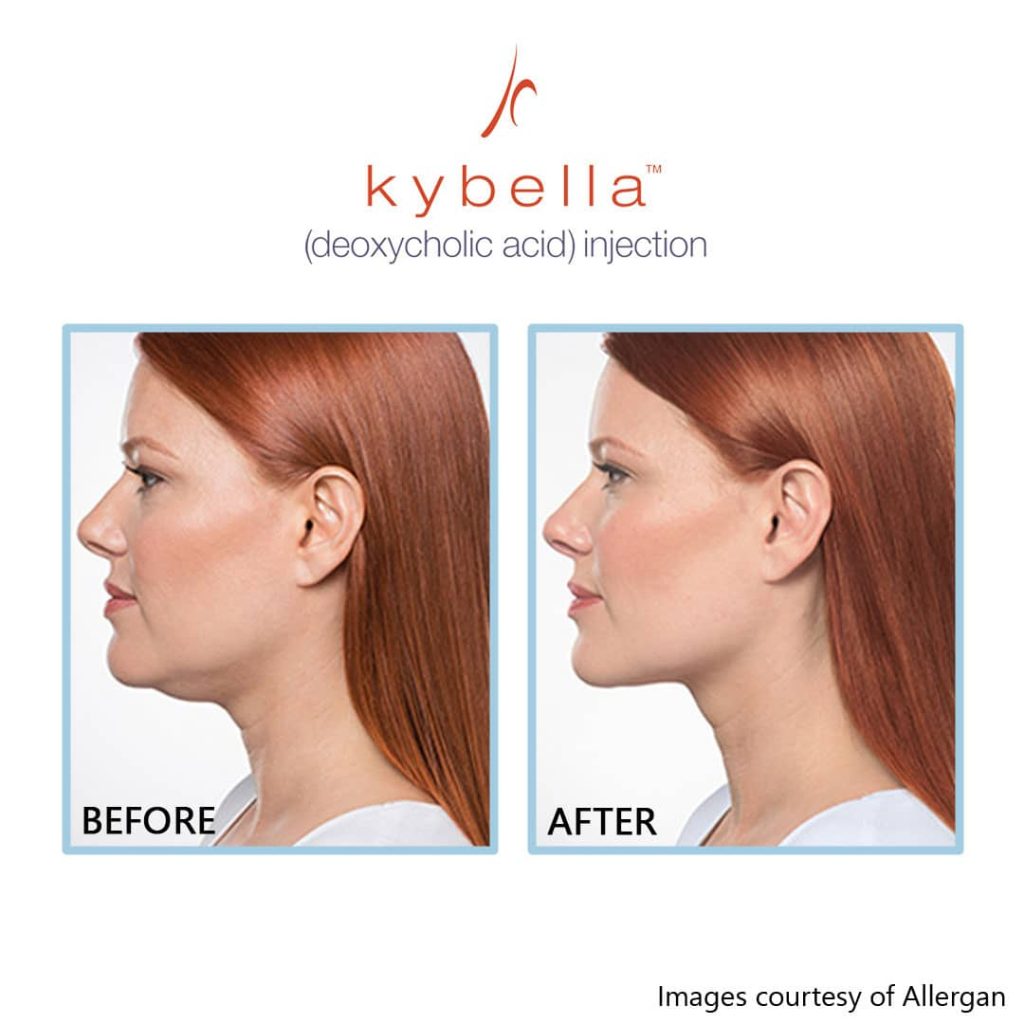
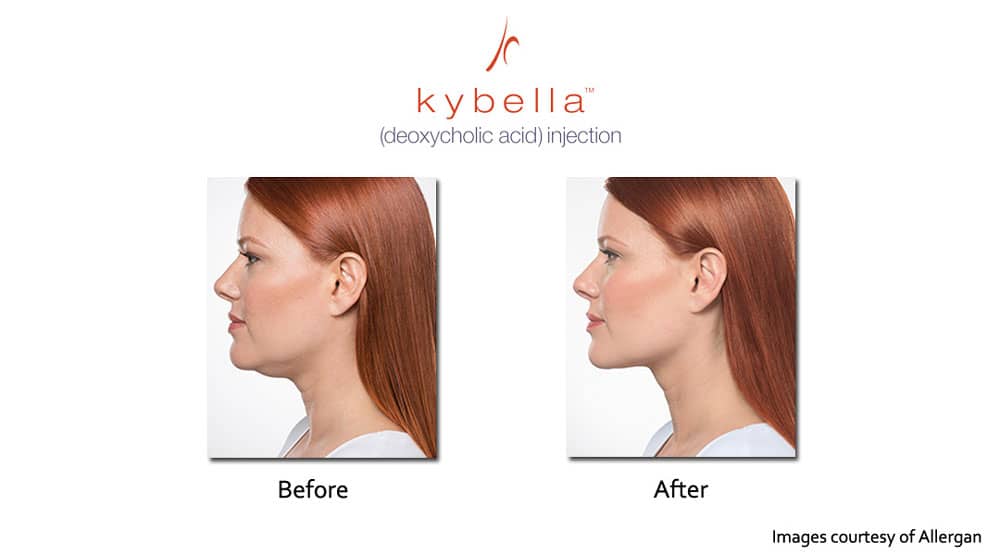
Kybella is administered through a series of injections into the submental fat, and it works by destroying subcutaneous fat cells. Once destroyed, these fat cells can no longer store or accumulate fat. While the exact number of treatments and injections required is dependent on patient response, preliminary research indicates that up to 6 treatment sessions, with up to 50 injections per treatment, may be required.
While some people prefer the term “non-surgical solution,” Kybella does have some drawbacks. For starters, the sheer number of treatments and injections required renders the procedure unsustainable, and quite taxing on the patient. Second, results from Kybella take some time to appear because the fat and inflammation must clear first. Third, Kybella results are generally unpredictable because they are entirely dependent on how the patient’s body responds to the treatment, the amount of submental fat present, and how well that fat is broken down and absorbed.
Double Chin Liposuction - Liposculpture
Liposculpture, also known as facial lipo or facial liposuction, is a quick and effective surgical procedure for removing fat from beneath the skin. Anesthetic is injected into the submental fat, followed by the insertion of a micro-cannula attached to a syringe for the sculpting of and removal of fat. In my practice, we perform liposculpture under local anesthesia which LITE sedation, which eliminates the need for general anesthesia.
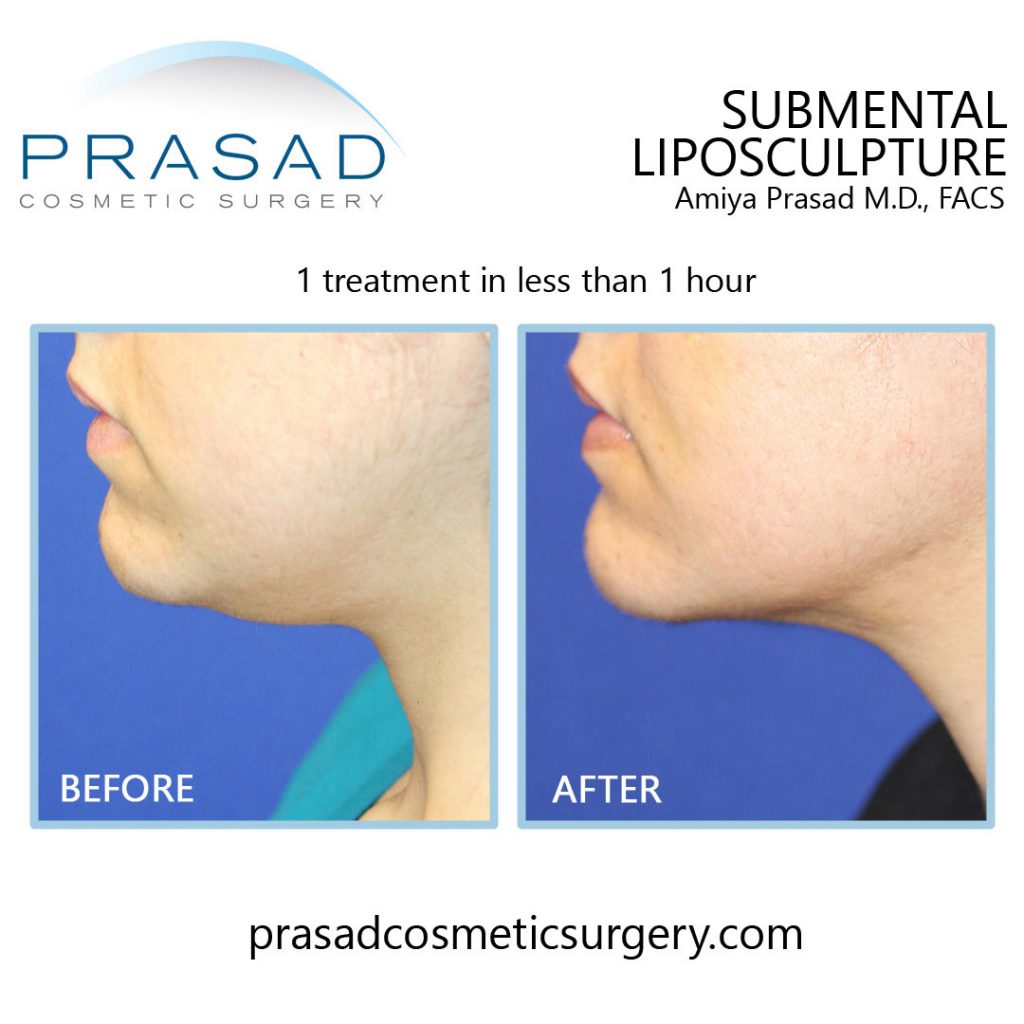
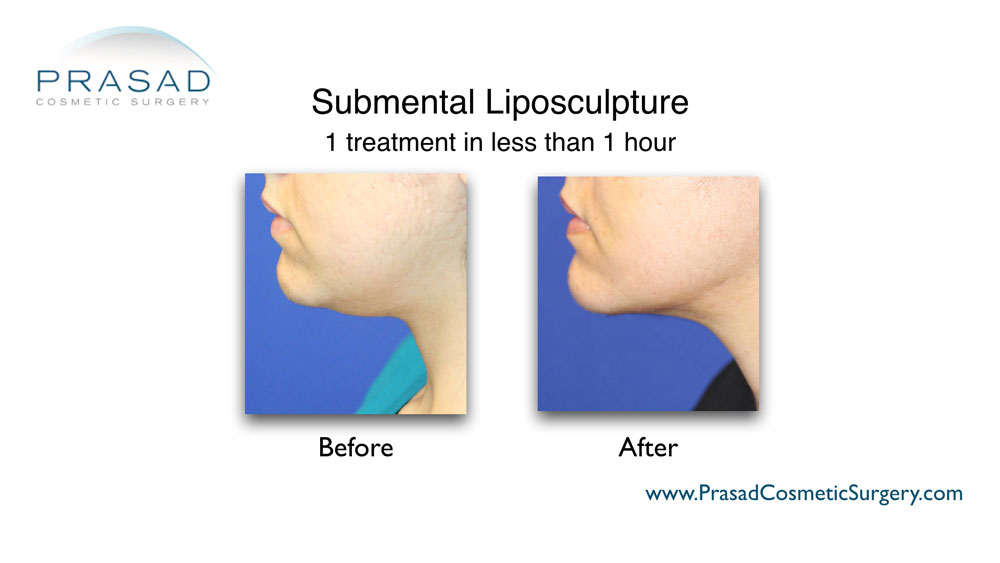
Though liposculpture is considered an invasive procedure — and it should be noted that any procedure that breaks through the skin’s barrier, including Kybella, is technically considered “invasive” — I prefer this method because liposculpture is a proven, well-established procedure that yields consistent, and highly predictable results. Furthermore, liposculpture has been shown to be effective after just one session, with immediate results. In contrast to Kybella, which takes much longer to achieve comparable results, we are usually able to complete what we set out to do within an hour of starting it.
Even with these procedures, it’s important to remember that not all fat is bad. Earlier in my career, it was encouraged to aggressively reduce fat under the skin as part of any procedure, whether it was face lifting, or liposuction, with the intention of causing some type of trauma to the underlying skin, resulting in skin retraction.
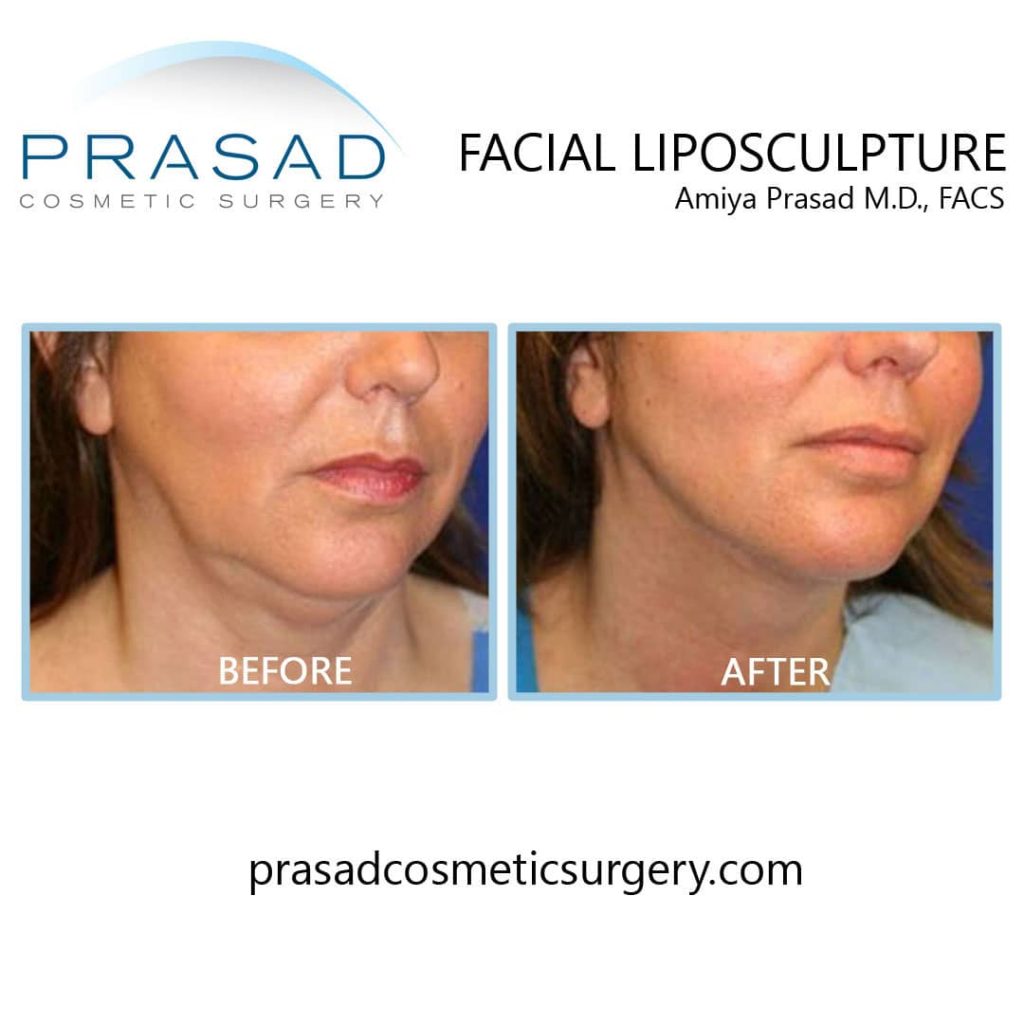
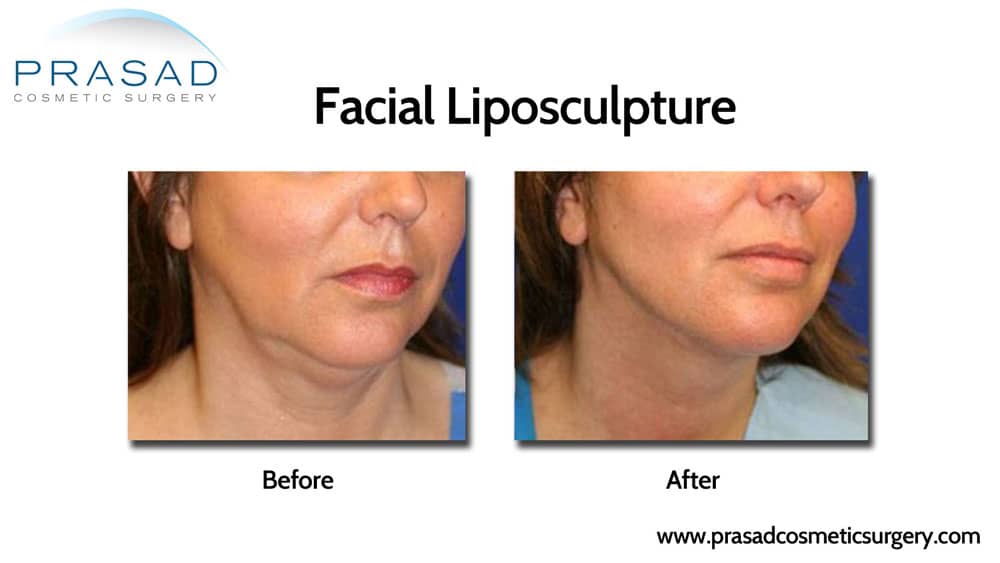
Since then, we’ve learned that aggressive liposuction or aggressive fat reduction can make skin appear older, wrinkled, and rippled. A thin layer of fat is good for the skin, as it gives youthful volume, and is required to achieve a smooth appearance. A thin layer of fat is also necessary for good skin quality. Liposculpture, in my opinion, can do this more precisely because the openings of the instrument can be directed away from the fat layer you want to preserve. This level of precision cannot be achieved with the diffusion of a fat dissolving chemical.
Swelling and bruising are common after liposculpture, but most of this goes away in about a week. Temporary swelling and bruising can also occur with Kybella at the injection sites
Submental fat, also known as under-the-chin fat, does not only occur in overweight people, as it is frequently a genetic issue. I’ve performed this procedure on people who are physically fit, but have a genetic predisposition to having a small amount of fat under the chin. A good candidate for this type of procedure is ideally a younger person with good skin quality and tone, and with fat accumulation in this neck-chin area despite being within 10 pounds of their ideal body weight.
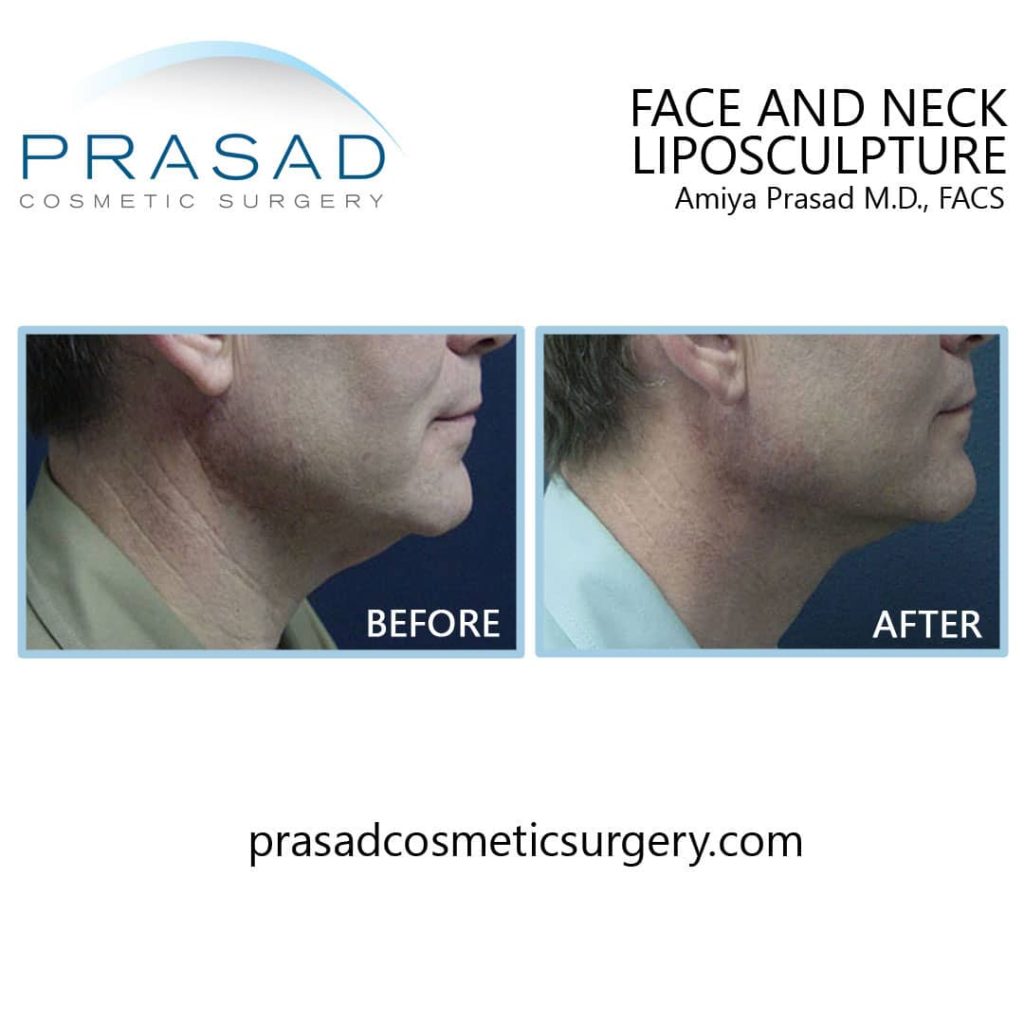
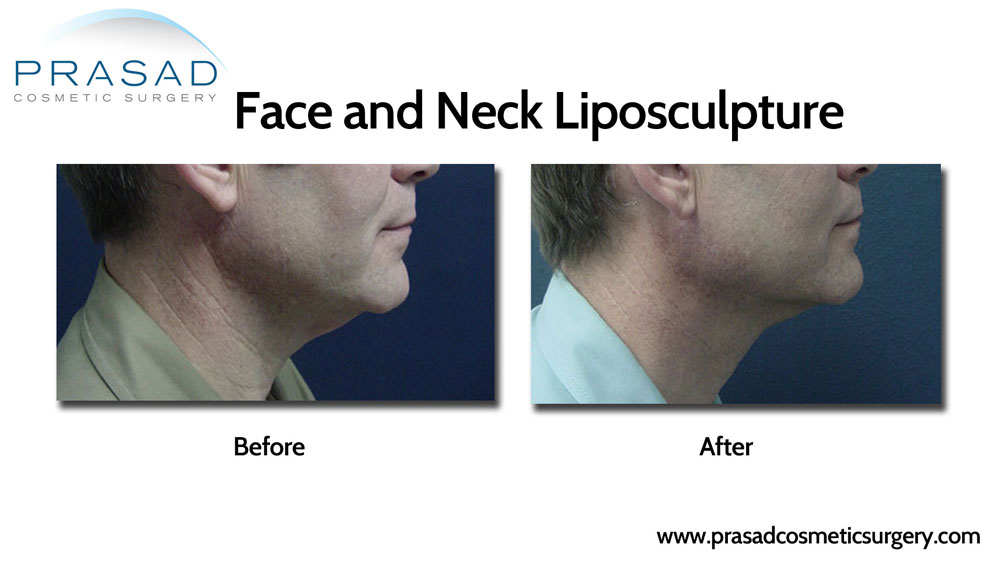
I cannot stress enough the importance of a proper diagnosis. Many people assume that the problem area under the chin is only caused by excess fat, which is not the case.
For example, the position of the hyoid bone can have a significant effect on defining the neck angle. The hyoid bone is located towards the front and middle of the neck, between the chin and the thyroid cartilage. When the hyoid bone is low, it shortens the angulation between the chin and the neck, which causes the jawline to look less defined.
Excess skin can also contribute to poor definition of the under chin area. Loose skin under the neck is caused by the gradual sagging of facial skin as we age, as well as the weakening of the SMAS (superficial musculo aponeurotic system), a soft tissue layer beneath the skin that communicates with neck muscles. When the skin sags, and the SMAS weakens, a facelift or a face and neck lift is the best solution.
Another cause for concern under the chin is loose platysmal bands that cause cords to form on the neck. Platysmal bands are neck muscles that have become more prominent or loose as a result of normal facial aging,or surgery. Many people have had chin liposuction done only to reveal more platysmal bands, resulting in an even more unappealing chin appearance. To reduce the protrusion and appearance of these bands, a platysmaplasty is the best treatment.
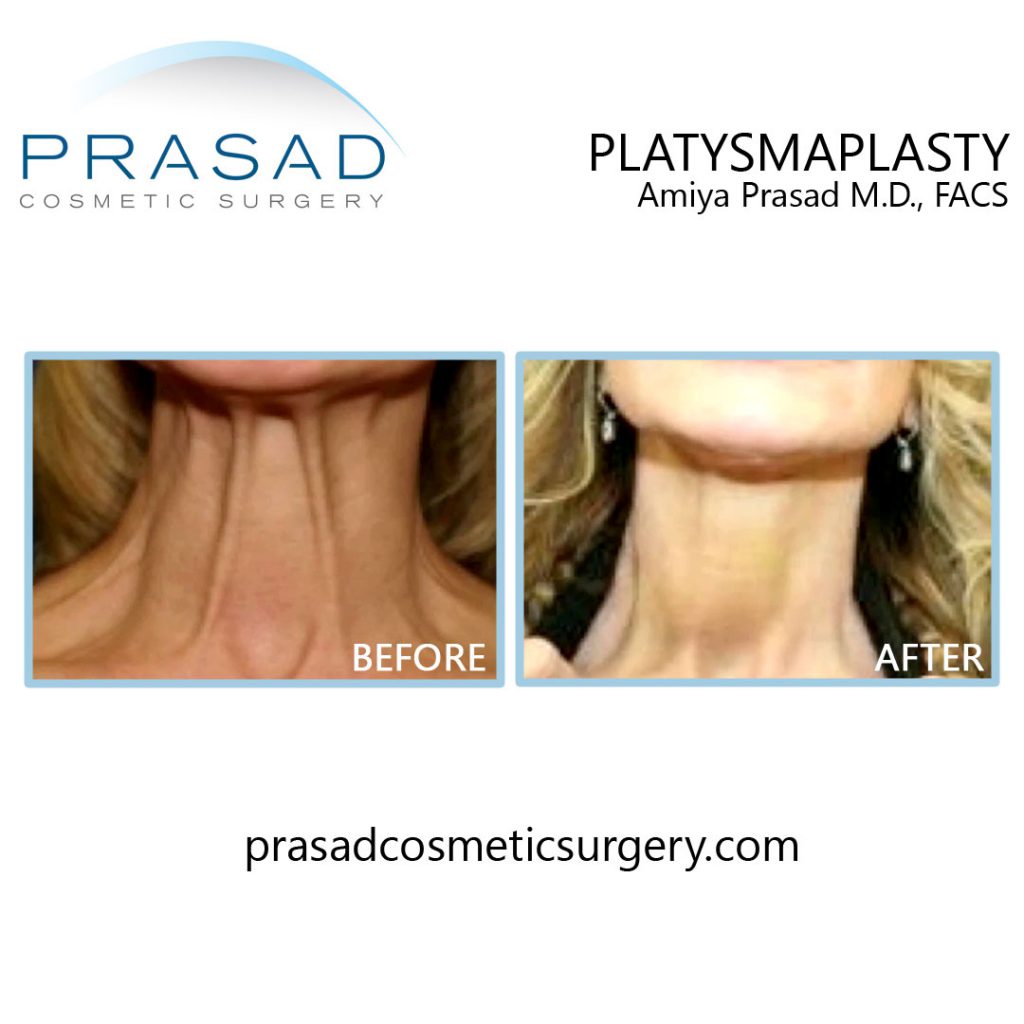
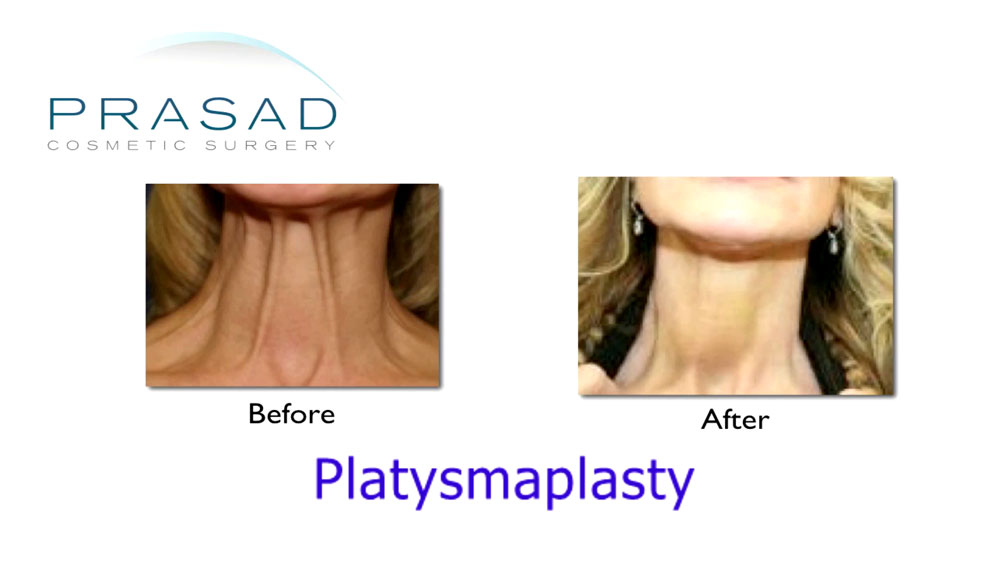
What is the best procedure for double chin?
I advise for a proper diagnosis, and a treatment plan to meet with a cosmetic surgeon with extensive experience in facial cosmetic procedures. The introduction of drugs like Kybella has resulted in many non-surgeons offering a so-called minimally invasive procedure when the same physician is inexperienced, and unable to perform any revision procedure if necessary.
It’s important for you to understand that proper diagnosis is critical to proper treatment. Consumer-focused messaging combined with limited scope physicians has created unnecessary issues, which could have been avoided. In my opinion, multiple injections with multiple treatment sessions which are expensive to try and dissolve fat is far more invasive and inconvenient than my performing under the chin liposuction with local anesthesia taking as little as 30 minutes.
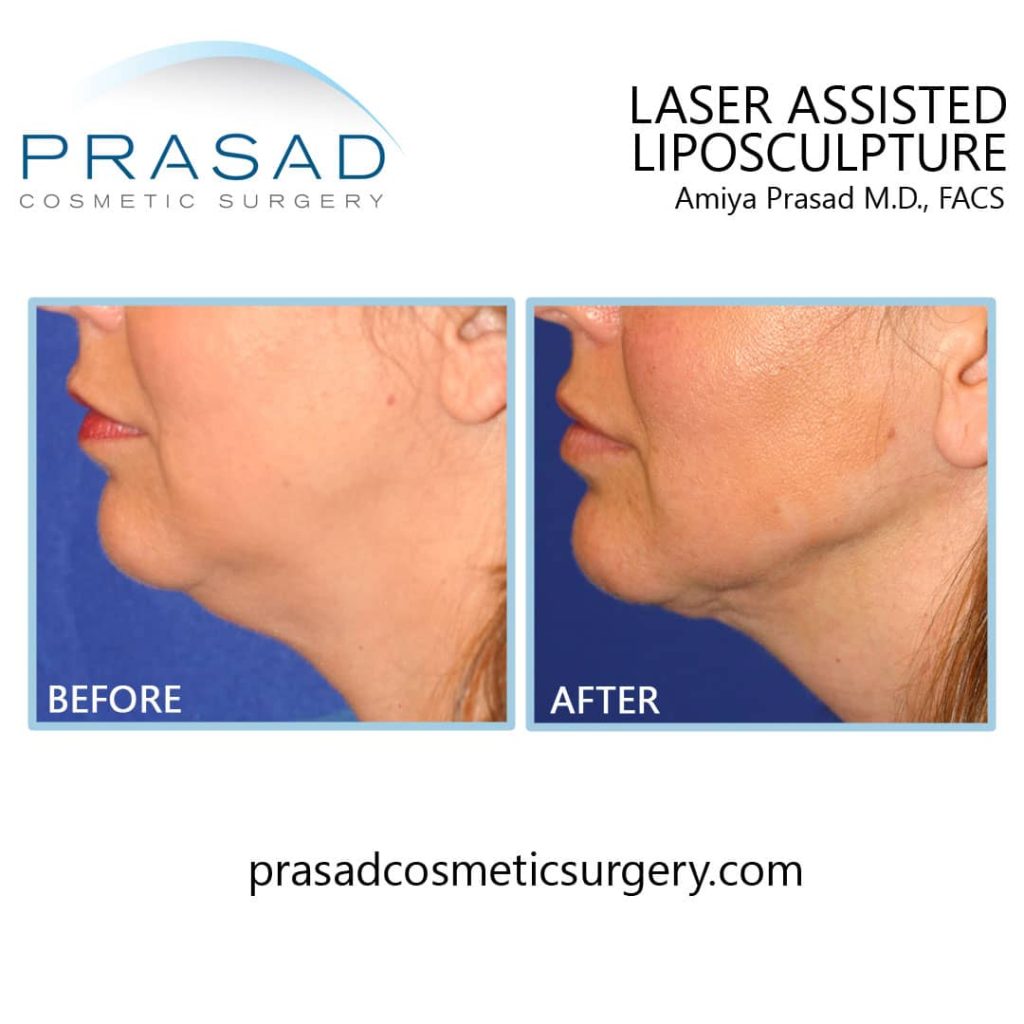
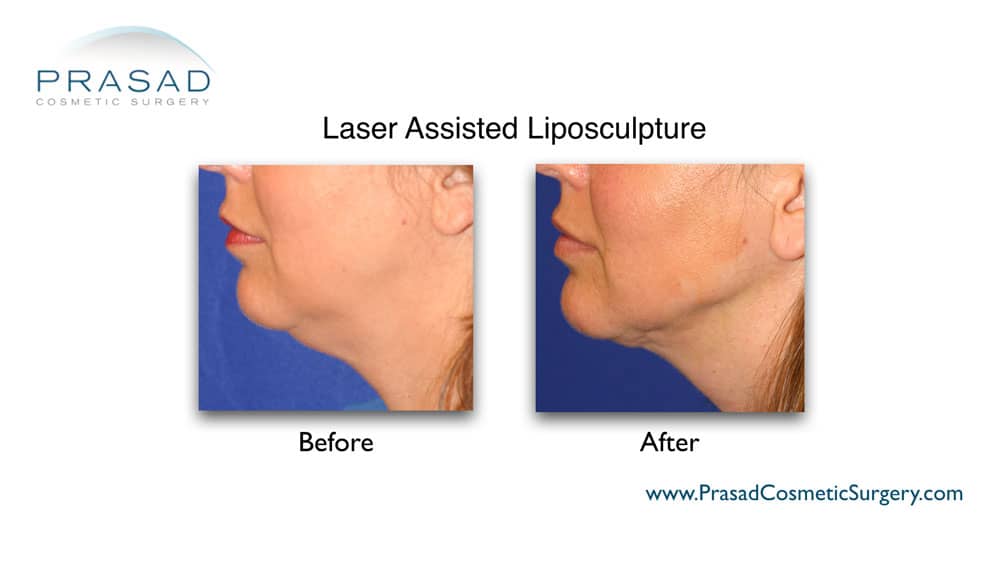
Double Chin Removal NYC and Long Island
Dr. Amiya Prasad is a Board-certified Cosmetic Surgeon and Fellowship- trained Oculofacial Plastic & Reconstructive Surgeon. He has been in practice for over 25 years in Manhattan and Long Island. He provides his patients with a wide range of solutions for improving the balance and harmony of their facial features. Cosmetic eyelid surgery, face and neck lift surgery, and non-surgical procedures such as Y-lift, PRP, Skin Boosting, laser treatments, and radiofrequency treatments are common procedures he performs.
